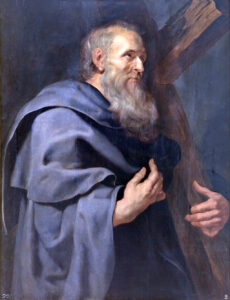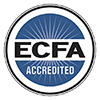By Dr. Don Bierle, FaithSearch President
The apostle Philip is known only from the Gospels. The Bible says he was from Bethsaida in Galilee, the same hometown as Andrew and Peter (John 1:44). He is listed as one of the twelve apostles in all four accounts in the Bible (Matthew 10:2-4; Mark 3:16-19; Luke 6:14-16; Acts 1:13). He is not to be confused with Philip the evangelist, identified as a deacon in Acts 6:5.
Philip may have had some difficulty comprehending the teachings and deity of Jesus. For example, before Jesus fed the 5,000, the Bible says He specifically asked Philip (as a test) how they could possibly feed all those people (John 6:5‑6). Philip’s answer suggests it had not yet occurred to him that as the Son of God, Jesus would be able to do it miraculously. Likewise, in the Upper Room on the night before Jesus’ crucifixion, Philip again revealed that he had not yet comprehended the full meaning that Jesus is the “I AM.” Jesus informed him on that occasion that to see Him (Jesus) is to see the Father (John 14:7-11). They are one “substance.”
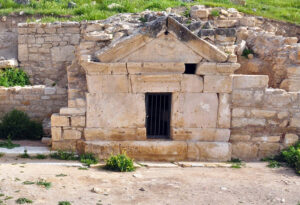
Later, however, Philip aggressively recruited Nathanael when he first became a follower of Jesus (John 1:44-46). His invitation, “Come and see,” makes it clear that Philip had become persuaded by the evidence that Jesus was the fulfillment of Old Testament prophecy. Philip was also used by God as an early bridge to the Gentiles who were seeking to see Jesus (John 12:20-22). The last reference to the apostle Philip in the Bible records his presence with the 120 in the upper room as they were waiting for the fulfillment of Pentecost (Luke 24:49; Acts 2).
The Rest of the Story
Philip’s ministry after that is shrouded in legend. The Acts of Philip, an apocryphal writing from the fourth century, was discovered in 1974. It is influenced by Gnostic thought and its content cannot be relied on. Among its claims are the following:
- He formed a ministry team with his sister Mariamne and Bartholomew (another apostle).
- They traveled throughout Greece, Syria, and Asia Minor, including a concentrated time in Hierapolis.
- His death was by crucifixion in Hierapolis (in present day Turkey), hung upside down with irons in his heels and ankles.
- Their ministry resulted in thousands of converts to Christianity.
While this cannot be verified, there must have been some truth to it since historian Eusebius (A.D. 260-339) called the apostle Philip a “great light of Asia.” He also said that Philip was buried at Hierapolis.
Philip’s Tomb in Hierapolis: Archaeological Verification
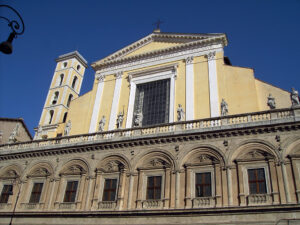
An octagonal martyrium to St. Philip had been built at Hierapolis early in the fifth century and remains to this day one of the most significant Christian sites in Turkey. It had always been assumed that Philip’s tomb was in the martyrium, though no evidence of the ancient burial was ever found. In 2011, the excavation director of the site, Francesco D’Andria, announced the discovery of a new church about forty yards away. There at the center of it was a first-century Roman tomb which once held the remains of the martyred apostle Philip. This early church of Christian Turkey was built around the tomb in the fourth or fifth century.
The human remains of the apostle Philip are no longer in the tomb, however. According to D’Andria, the apostle’s relics were moved from Hierapolis to Constantinople at the end of the sixth century. They were later possibly taken to Rome and placed in the newly dedicated Church of St. Philip and St. John.
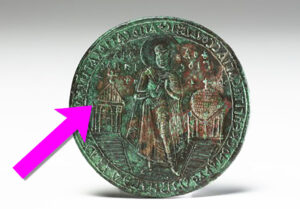
This new discovery also sheds light on the wonderful imagery of the rare sixth-century bronze bread stamp currently housed in the Virginia Museum of Fine Arts.
Along with Philip, it shows two churches from the site of Hierapolis. The structures on either side of the apostle can now be identified as the domed martyrium (on the right) and the newly excavated Byzantine basilica (church) containing the tomb of the apostle Philip (on the left).
“Well done, good and faithful Servant”
Because we do not have detailed, historically reliable records of the apostle Philip, as we do for the apostles Peter and Paul, we tend to regard them as less important. But we know enough to be assured that he passed the test of the parable of the talents – he gained more with the investment Jesus made in him (Matthew 25:14ff). He brought the Gospel of Jesus Christ to Asia Minor. He was a faithful servant and subsequently entered “into the joy” of His Master!
Sources: “Discovery made at Hierapolis,” Biblical Archaeology Society Staff Report, June 16, 2022; “Philip’s Tomb Discovered—But Not Where Expected,” Biblical Archaeology Review, January/February 2012; “Conversion, Crucifixion and Celebration,” Francesco D’Andria, Biblical Archeology Review, July/August 2011.
